
Power Steering Assist Fault: How To Fix It?
Driving has gotten a lot more comfortable and securer since the invention of power steering assist in cars. It offers improved mobility and better vehicle control.
The power-steering system has a hydraulic force and assistance function, which functions as a guide. If the power steering assist fails, a warning will appear. When does the power steering assist fault produce an error message?
What Actually Is Power Steering Assist, And What Does It Do?
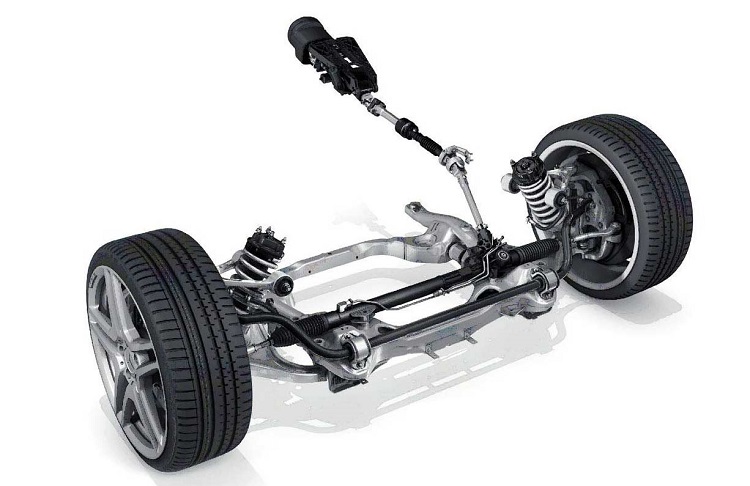
There was just one approach to driving your car in the past. You place both of your hands on the wheel and give it you’re all.
The first time a car was equipped with power steering was in 1951 when the Chrysler Imperial debuted. It used hydraulic power steering. The 1951 Chrysler Imperial is an example of this invention’s usefulness. It was useful for the next fifty years.
Today’s EPAS is now available. “EPAS” refers to a vehicle’s electric power-assisted steering system. This, too, includes a hydraulic pump and works with the aid of hydraulic fluid.
Instead of absorbing engine power, this makes use of an electric pump to pressurize the fluid, allowing it to assist in steering.
What Is It And How Does It Work?
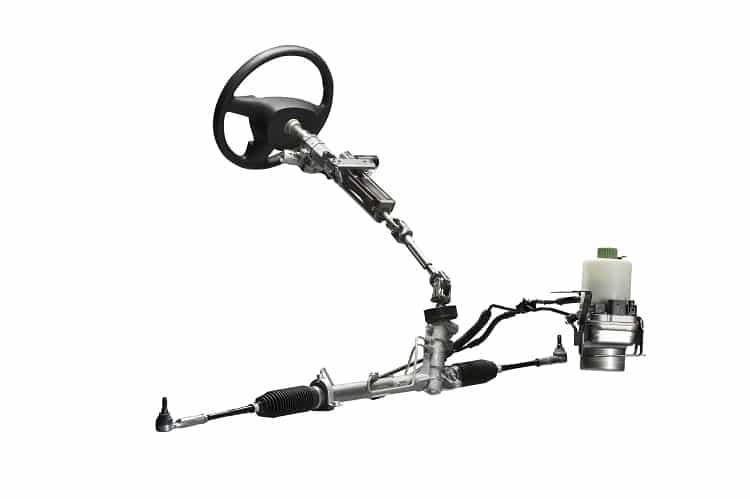
The mechanism works similarly to other hydraulic systems. How, on the other hand, does it produce pressure and how precise is it?
The precision of the Tesla Model X comes from a variety of sources, including tiny and major components. The steering is turned in a specific direction, fluid is sent from the reservoir to the wheel cylinder.
The hydraulic fluid that travels through pipes from the wheel cylinder to the road wheels multiplies and amplifies the force applied to each tire.
The machine that produces the pump’s power. It was linked to the engine by a belt, and it utilized the engine’s energy to operate the pump. We now have an electric pump that generates enough electricity to run the equipment.
The second belt of the chain saw was known to take a lot of power. Even when you aren’t utilizing the belt, it is connected. This reduces the overall efficiency of the system. An electric pump resolves this problem by relying on electricity rather than gas.
Because the electric pump draws power from the battery, it works more efficiently.
A steering system that is power-assisted functions in the same way as a regular power steering. We previously had a complete hydraulic system that was only driven by the engine’s power.
Today, it’s more popular to notice a hybrid approach that employs an electric pump rather than a hydraulic system entirely dependent on fluid pressure.
The EPAS, or Electric Power Assisted Steering, is a function of power steering. This doesn’t require the use of hydraulics. The usage of this technology is growing increasingly popular.
As a result of the new EPAS steering mechanism, vehicles now include numerous technological advancements, including lane assistance, parallel parking assistance, and cornering aids
What Causes A Power-Assisted Steering System To Break Down?

The components of your power-assisted steering system will vary depending on the type of power-assist system in your automobile. As a result, the issues it’ll cover won’t apply to every power-assisted steering system.
The single thing you can do to steer your car’s course utilizes the steering wheel. The brakes and engine assist in moving the vehicle forward and halting it when needed. The steering, on the other hand, keeps the vehicle under control.
As a result, it necessitates particular attention and upkeep.Observe several frequent problems with the helped power steering system.
Electrical Issues
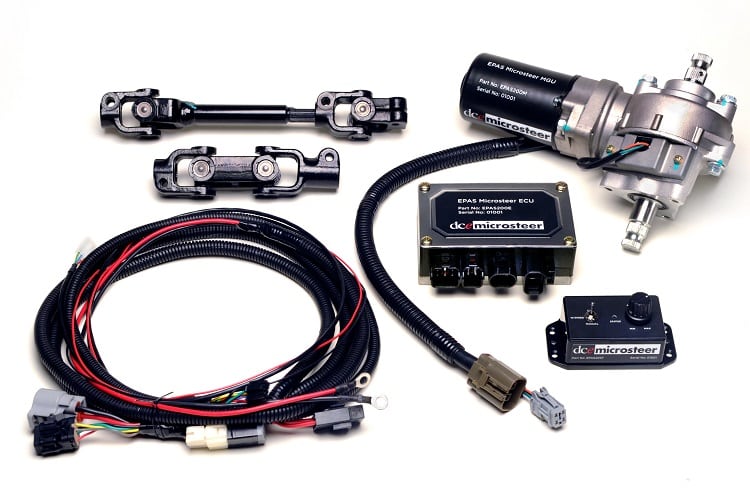
It’s not connected to the hydraulic system. When turning the wheel becomes more difficult than usual, it’s conceivable that the electrical system is at fault. If your fluid levels are low but your fluids are okay, yet you encounter this problem,
If the electrical assist strategy fails, it’s usually due to a problem with the electrical pump that pressurizes the fluid. The steering becomes more rigid as a result of your lack of support in turns.
An OBD 2 scanner is the most straightforward method to figure out what’s wrong. Based on the findings of this testing, you should determine which component needs replacing.
If you don’t have one, keep your eyes open for anything unusual. Look up to the wires and the fuse box directing up to the steering system for abnormalities.
Look for anything out of place that might be causing the problem. If nothing appears to be wrong, check next for battery voltage.
If thus far, everything has gone well, there may be an unforeseen fault. The warning light or the power steering electronics may be malfunctioning.
It’s critical to resume your car at least twice or three times. The warning light may be reset, or the issue might be resolved. However, bear in mind that it is a limited approach. Get your automobile examined as soon as feasible.
You’re Running Out of liquids
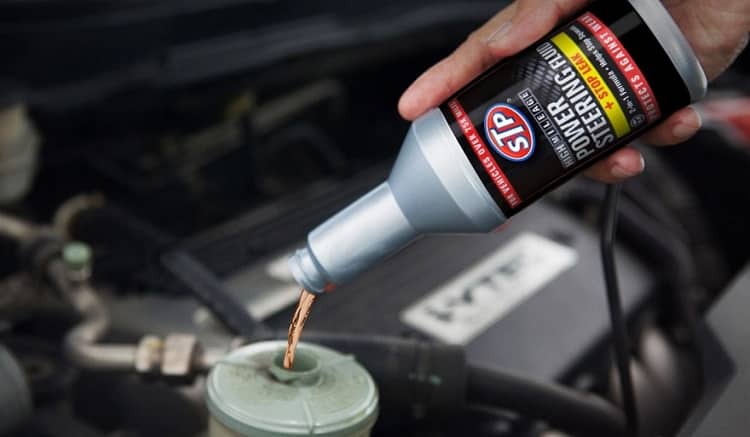
You may run out of hydraulic fluid or electric fluid if you use a hydraulic energy steering system. If you don’t top it off at least once a month, you might run out of steering fluid.
It’s also worth noting that if you keep working five times as much to develop your steering, it’s likely that the hydraulic system can’t transmit power towards the wheels as required.
If your gas tank is empty, you should check it right away. It’s not the best to check your car’s fuel levels when it’s cold outside. Before checking the liquid levels, you’ll need to start the engine and let it warm up. You won’t be able to determine your vehicle’s runny levels until you do so.
When the fluid level in a power steering system is too low, it may cause permanent damage to the components. You believe you can make it through this trip and check the fluid levels afterward.
You might be able to manage, but if you are inexperienced, you could have to swap the whole steering system.
Turning Is Difficult When The Surface Is Rough.
You may occasionally hear a grating sound when you rotate the steering wheel. It isn’t a major problem, and the solution is usually straightforward. However, the noises may be distressing and frightening at times.
A belt drive is frequently the source of the issue. Review your power steering pump pulley for alignment. So, that’s the first thing you should look at if you hear grinding noises.
Grinding noises, on the other hand, might not be a serious problem now, but they signal that you’ll soon have a problem.
The repair is simple. When you ask a buddy to turn the wheel, get up your car and enroll his help. You may then get down and check the belt if he drives it. If it looks like it’s slipping, tighten it and make any necessary modifications.
Liquid Leaks
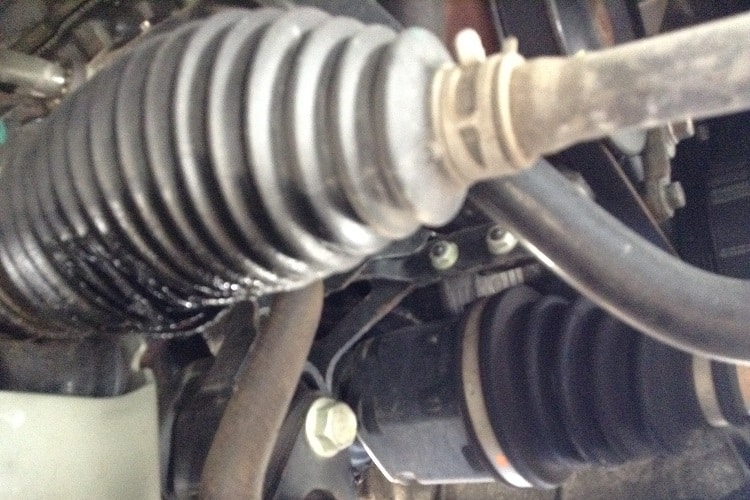
Power steering assist fault is fairly common, particularly among older vehicles. Power steering fluid leaks are a typical cause of power steering assist failure.
When your engine leaks power steering fluid, it isn’t simply a puddle on the driveway. Here are many concerns that go along with the leak, rather than just the mess it created.
In only a few minutes, leaking power steering fluid can have a devastating impact on the operation of the power steering system. When you drive, this might happen. Mid-drive units are known to suffer from frequent low fluid levels.
If you’ve never driven a car with power-assisted steering before, and it vanishes while you’re driving it, getting accustomed to it will take some time. It will bear some time to get used to not being able to drive your vehicle with complete control.
The color of the steering fluid varies, but it is usually pink or red. This can be the same hue as automatic transmission fluid. Look for a leaking steering fluid to figure out where it’s coming from.
Steering fluid leaks out of your engine and creates a puddle below it. A gearbox leak, otherwise, will be found in the mid of the vehicle.
What Can You Do If Your Power Steering Fluid Is Leaking?
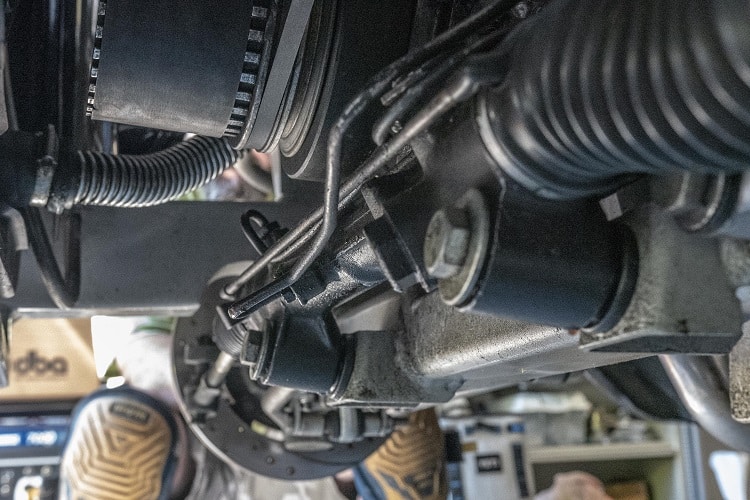
The first step in locating the source of a leak is to look for it. There might be numerous causes for your power steering assist fault. You must see for the liquid to seep, but certain patterns emerge.
Examine the taps that move steering fluid. They may be old, cracked, or broken. The seals are another potential source of trouble. Look for screws and loose clamps in all leaking components to verify that everything is secure.
If there are any leaks, examine the fluid pump. Examine the central frame for pollutants; the problem may be with the pump.
Cracked Strap
A power-assist power steering system is driven by a belt linked to the crankshaft. Their strength diminishes with time, which is why the belt might break. They may also slip as a consequence of their slippage.
As the belt begins to separate from the crankshaft, it no longer has adequate energy for the pump to function. You’ll need to give more energy for each revolution than you would normally with the pump.
The failure of power steering assist is one of the most hazardous possibilities. This happens all at once, causing the driver to become frightened. Because you won’t be capable to drive the car easily, commanding it in this scenario will be difficult.
If the strap slips, you might attempt to reset it. However, if the belt breaks or slips, replacing it is the wisest course of action. If you put it back together because of a fault with the belt and it subsequently slipped,
The most frequent reasons for power steering assist failure are listed below. You should no longer be concerned about the phrase “How to repair a power steering assist fault?” after learning the symptoms and treatments for these problems and solutions.
Power Steering Assist Fault Is Prevalent In Motor Vehicles.
While this isn’t a problem that many automobile owners face, certain vehicle models are prone to it. You don’t want your steering system to go crazy.
Understanding the models that are most prone to this issue might assist you with tips to avoid them or address any associated issues.
The Power Steering On Your Ford Fusion Is Not Working.

In 2014, Ford Fusion was recalled because of this fault. The bolts were discovered to be lacking the required protective layer. It caused them more inclined to rust. As a result, the engine separated from the lodging due to corrosion of the bolts.
When a power steering assist fault occurs, the power-assisting function of the steering system is disabled. Turning the steering wheel at inferior speeds becomes more difficult as a result of this.
Ford Fusions manufactured between 2013 and 2016 were recalled owing to this concern. The automobiles concerned were produced in Canada’s Hermosillo, Salt Lake Assembly plants, or Oakville.
If any of the bolts were rusted, they were replaced. A wax layer was applied to the vehicle, and any rusted bolts were replaced.
EPAS Concerns In The Ford Focus EPAS

EPAS (Electronic Power Assisted Steering) is the name of Ford Focus’s steering technology.
This technology has been known to fail in the Ford Focus. It’s uncertain which component goes wrong. You will forfeit your power steering assist fault happens because it is entirely electric.
A power-assisted system is prone to failure. It can occur in a variety of circumstances, but most often when the vehicle is idling for extended periods.
The only silver lining is that this problem mostly happens at inferior speeds, between 10 and 20 mph.
EPAS failure-caused accidents are therefore uncommon as a result of this condition. It’s unclear whether the fire was caused by this defect or if it will be addressed in a recall.
Steering Assist Failure On The Ford Flex

On certain Ford Explorer models, the famous electrical power steering method has been reported to fail. This is especially common in the 2013 Ford Flex.
The trouble is most often seen at ignoble speeds. There has yet to be an explanation for the collapse. Many technicians, on the other hand, believe that altering the relay system regularly resolves the issue
Power-steering assistance failures are found in a variety of vehicle models. Ford is notorious for this defect, which is evident by the fact that it appears on the list below. Even though the Ford Escape has had problems with power steering assist fault.
What Is The Procedure For Resetting A Power Steering Fault Code?
You should not ignore a warning on your dashboard when your power steering assist fault occurs. If you don’t wish to drive with it, you should reset it using the techniques below if the problem is severe enough.
The simplest method to reset the warning is to turn off your car. In your automobile, switch on and then shut off all of the electrical components.
This will restore all of the vehicle’s electrical systems. Repeat this process two or three times until the power steering assist fault warning goes away.
The power steering system is crucial for the protection of a trip. It poses a significant danger to your safety if it fails. You should act as soon as you obtain an indication that the power steering is broken. You must have it looked at right away.
If you can’t start your car after rescheduling the codes, a faulty sensor likely is to blame. A power steering assistance fault alert suggests that the power steering assist fault may occur and it may stop functioning properly.
For people’s trips to be safe, do not set the code again and forget it.
A notification will appear if you do nothing to fix the problem. Your energy steering system may go out without notice if you reset the alarm each time it appears.
FAQs
What Are The Causes Of Power Steering Assist Fault?
Power steering failure can be caused by a variety of factors, but it is frequently caused by the following:
- There are a variety of car models that use the same basic power steering system. When using this equipment, be sure the coolant is full.
- System failure of the power steering fluid pump
- Electrical problems
The most typical reasons for steering wheel failure are as follows. The fluid becomes contaminated when pumps yield, hoses degenerate, or air infiltrates the system.
What Should I Look For If My Steering Fluid Is Leaking?
Look at this if you find it hard to repair the power steering assist fault. If you meet a pool of liquid while getting out of your automobile from the garage and aren’t sure if it’s steering fluid.
Your first concern should be the fluid’s color. The steering fluid is frequently pink or crimson. Transmission and anti-freeze are also red in hue. Next, consider the texture of the fluid. If it has a slimy feel to it, it defeats the purpose of using antifreeze. If the liquid is brownish in
If you’re still perplexed as to what the puddle is, look at the source of the leak. If your steering fluid is leaking, it’s most likely coming from somewhere near the engine. Transmission fluid leaks out around the vehicle’s center.
How Frequently Should Power Steering Assist Fault Be Repaired?
Change the power steering fluid every four years, or 50,000 miles, in your automobile. It’s not clear whether it’s better to change it before four years are up.
If you examine the power of seeing fluid and see that it is discolored or brown, take care of it instantly instead of waiting for a long time.
What Occurs When You Use A Small Amount Of Power Steering Fluid?
There’s an explanation for why they advise against driving with low power steering fluid. Because it will not be able to lubricate or cool the steering system as effectively as normal, low power steering fluid would not be capable of doing so.
Replace your ignition switch with a new one if it is worn or has other issues. This can result in severe damage to your steering system. Your steering may seize up while you drive, resulting in a serious collision.
When Should You Flush Your Power Steering Fluid?
The expiration time is determined by the manufacturer. Unless you use your car to tow, haul, or leave it parked for lengthy periods, the suggested time is more than enough.
How Much Does It Cost To Replace Power Steering Fluid?
On average, replacing the power steering fluid costs $120. Different companies have various standards for steering fluids. The cost of each may vary depending on the type used. Nonetheless, the typical expenditure is around $120.
How Much Does A Power Steering Assist Fault Repair Cost?
The expense of replacing a damaged component is based on the part that was damaged. Because the problem is associated with unclean or low fluid levels, which only cost about $120 to fix, the repair will be cheap.
If the problem is electrical, the repair will be more expensive. If any sort of electrical device is damaged in this instance, you should expect to pay anything from $300 and upwards.
If your pump fails, the worst-case situation is that you have no steering fluid. Some cars’ steering fluid pumps may cost more than $1000 in replacement costs.
Conclusion
The steering gearbox is a critical component in the security of a car. The only element through which you may manage the vehicle is the steering wheel. Even though the engine and brakes enable you to accelerate and decelerate, they do not let you maintain your car on the road.
There are three types of power steering assist faults to consider. Hydraulic steering, which was developed in 1951, is the first type. This gets its energy from the engine and uses hydraulic fluid to transmit force.
The EPAS follows. This is a battery-powered electrical system. This is the case with new cars that are currently being produced. Finally, we have a hybrid system. Which is driven by a battery and transmits force via hydraulic fluid.
There are several reasons for a power steering assist fault might arise. The most typical problem is due to a hydraulic fluid or an electrical issue. You must repair the power steering assist fault based on the reason for the problem.
Restarting your car may help to clear the fault codes. However, you should not ignore the warning. The indication of danger is a warning signal. As a result, when possible, have your automobile evaluated. Restoring the code will not correct the problem.
It’s likely to reoccur shortly. If you ignore it, your power steering assist fault may be done.

